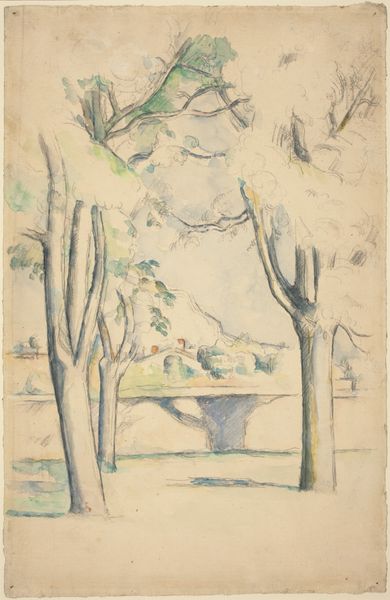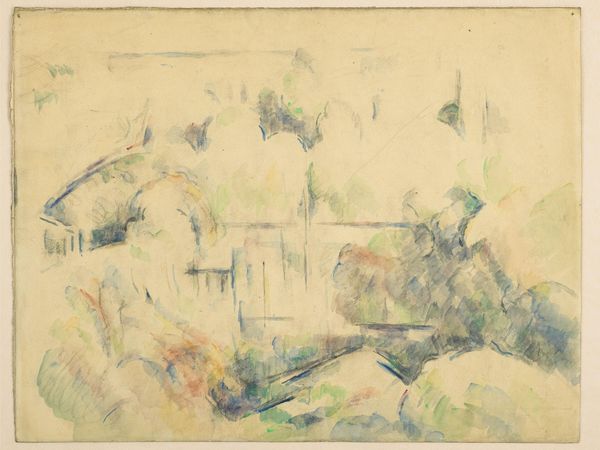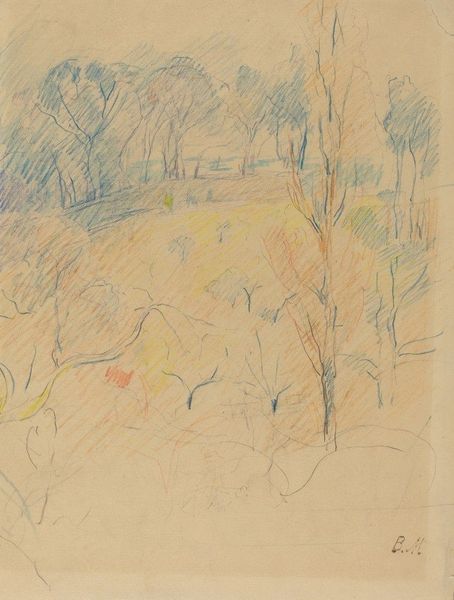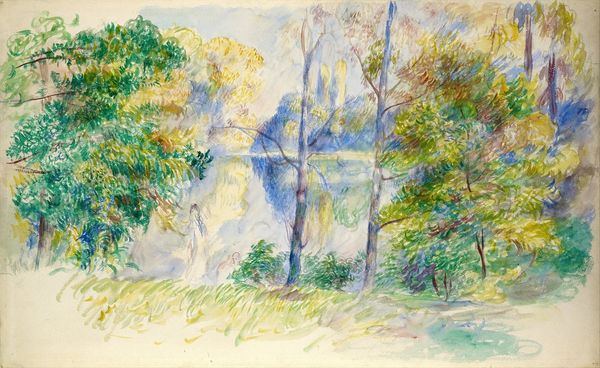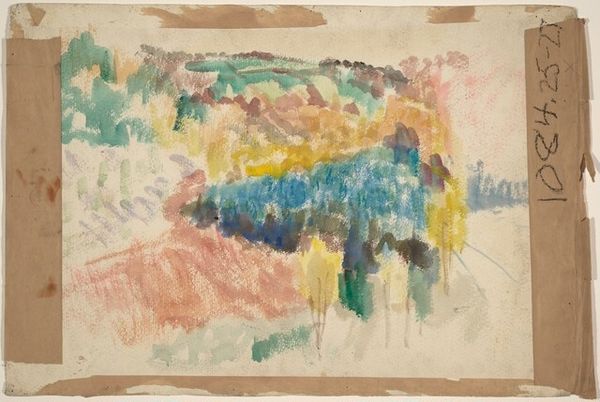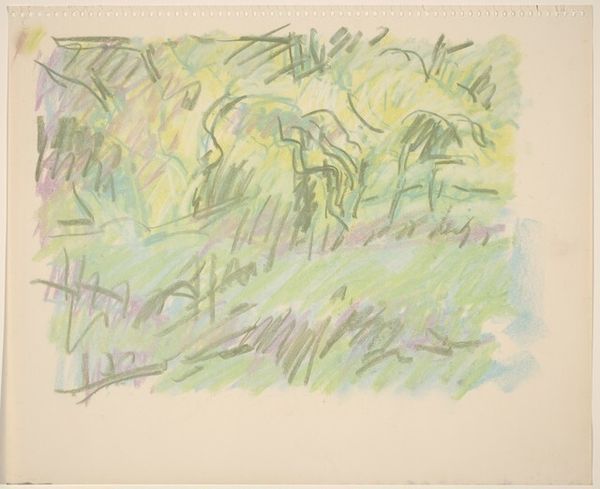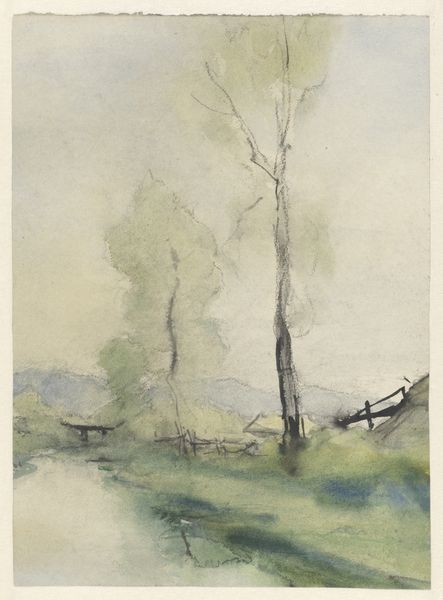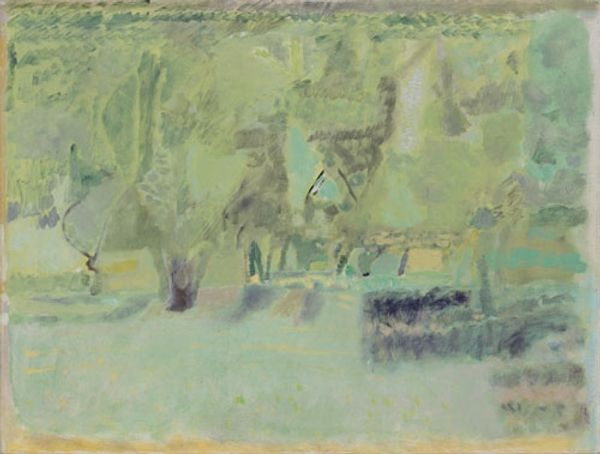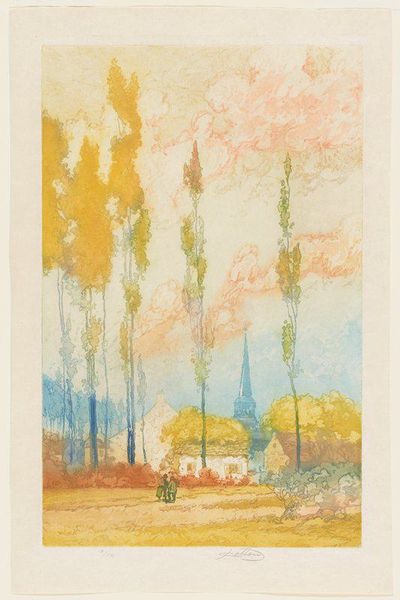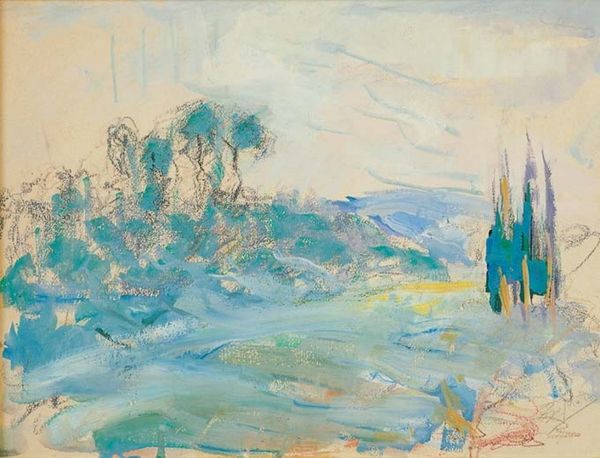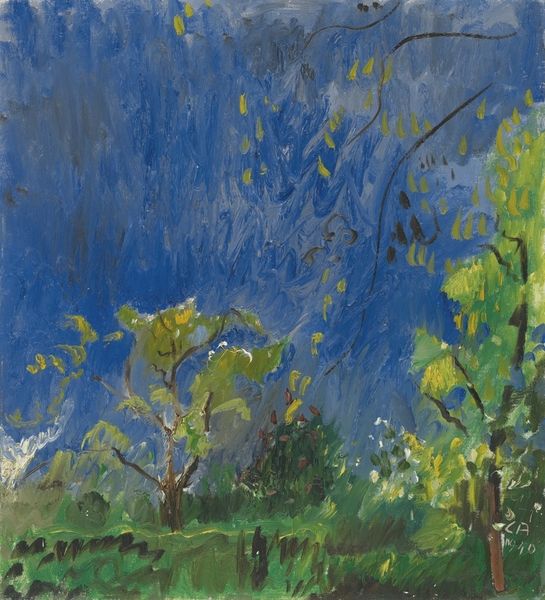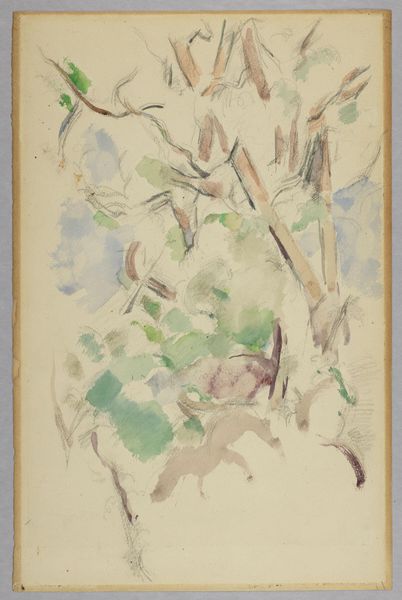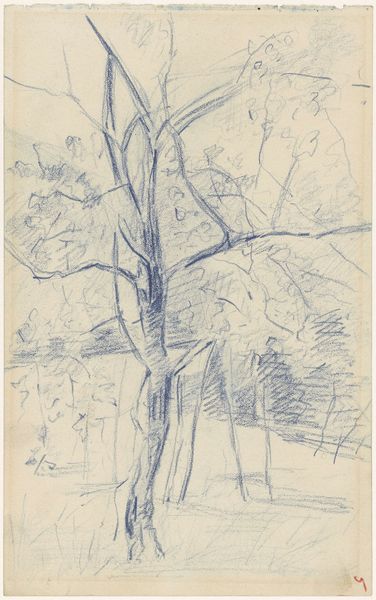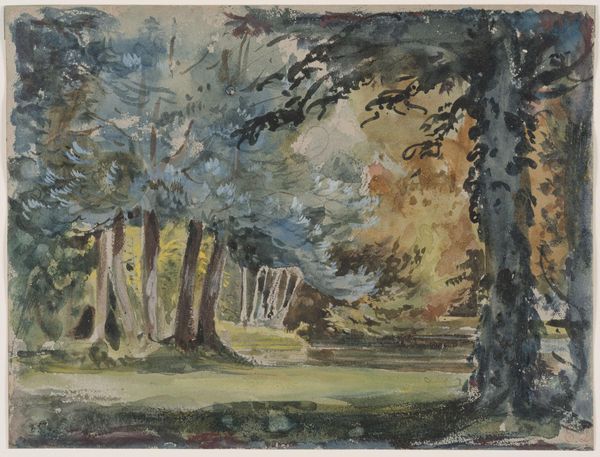
Landscape (recto); Sketch of rocks(?) (verso) 1850 - 1906
0:00
0:00
Dimensions: 18 5/8 x 12 5/16 in. (47.3 x 31.3cm)
Copyright: Public Domain
Curator: This is Paul Cézanne's "Landscape," a watercolor and graphite drawing likely created between 1850 and 1906. Look closely and you might even see a sketch of rocks on the back! Editor: Immediately, I notice this luminous, almost dreamlike quality. The watercolor creates soft, diffuse light, blurring the boundaries between objects. It feels less about representing a literal place and more about capturing a transient feeling, a moment of light. Curator: Precisely. It is interesting to note how Cézanne used the medium to capture atmosphere, to distill nature's fleeting appearances into more elemental shapes. Editor: In that context, what does this almost complete elision of defined shapes and the preference for overlapping strokes signify, psychologically? It speaks to a breakdown of conventional, fixed ways of seeing—a rejection of established perspectives of landscape and society itself. This coincides with late 19th-century social unrest as many called out established norms of governance. Curator: You know, in many ways it represents the core of his vision. Line work that builds up mass while still allowing light to breathe and filter through. Think of it as a prefiguration of Cubism. And these repeated shapes could reference more ancient forms found in nature. Editor: Right. And this connects to wider anxieties around urban growth as an expression of ecological balance in opposition to early industrial society. How can an individual define a unique sense of place against those encroaching systems? Curator: I agree. These repeated strokes evoke something primordial, an underlying structure always at work beneath the surface. These impressions are so layered that their forms invite almost subconscious observations. Editor: For me, the dissolving shapes reflect not just nature, but perhaps an entire social order undergoing seismic shifts. It holds multiple readings and interpretations based on societal conditions of a people and their place. Curator: Ultimately, Cézanne is pointing us to something timeless. Editor: Indeed, it speaks to historical processes while creating an opening to project contemporary understanding and insight into ecological shifts in modern society.
Comments
No comments
Be the first to comment and join the conversation on the ultimate creative platform.
